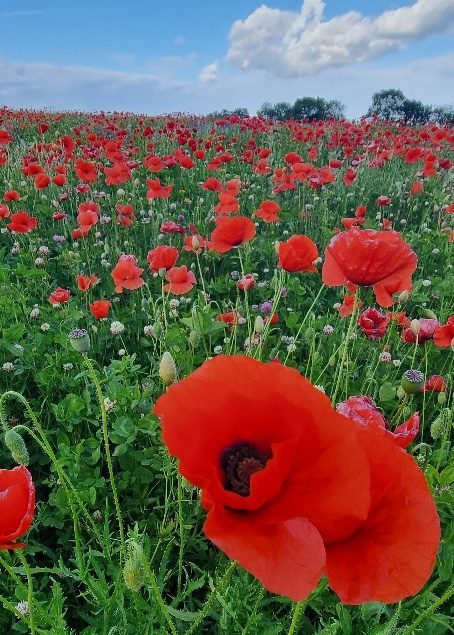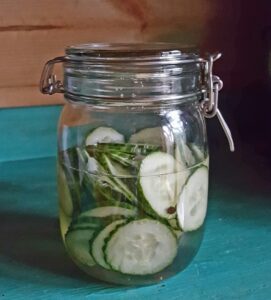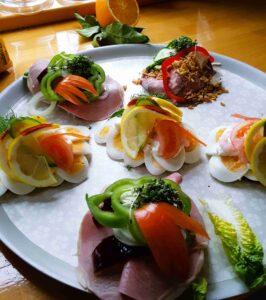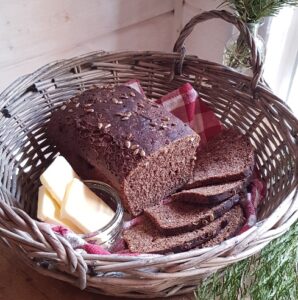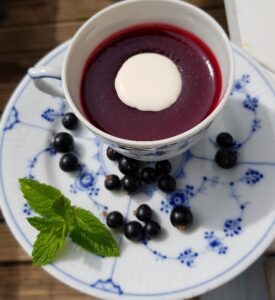What’s so special about Midsummer, I hear you ask? Well, Scandinavia bursts into life each June with Midsommer, a joyful festival celebrating the summer solstice, the year’s longest day. This tradition stretches back thousands of years, blending ancient pagan customs with modern fun. While the exact date varies slightly depending on the year, Midsummer festivities typically take place between June 19th and June 25th.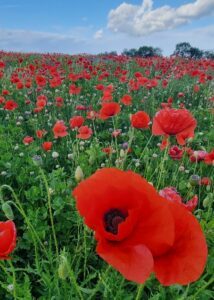
Dancing Around the Maypole
A central feature in Sweden is the majstång (Maypole), a tall pole decorated with greenery, flowers, and ribbons. Swedes raise the majstång on Midsummer Eve, and people of all ages gather around it to sing, dance, and celebrate together.
Bonfires Light Up the Night
As dusk falls on Midsummer Eve, bonfires known as bonfires (Denmark) or midsommarafton (Sweden) illuminate the night sky. Originally believed to welcome summer’s warmth, these blazing beacons now serve as a gathering point. Friends and families share stories, sing songs, and soak up the magical night; we like to stand around ours watching teenage boys poke it with a stick.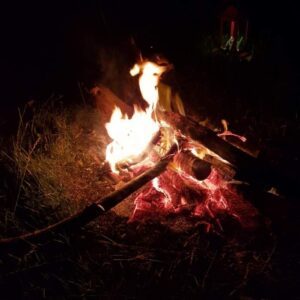
Denmark and the Burning Witch
In Denmark, there’s a unique twist on the Midsummer bonfire tradition. Atop many Danish bonfires sits a straw effigy of a witch, symbolically burned away as the fire crackles. This tradition doesn’t hold the same weight as the historical witch hunts of Europe. It’s more lighthearted, with the burning witch representing the chasing away of winter and negativity to welcome the warmth and light of summer. Some Danes jokingly say the burning witch is being “sent off to Brocken,” the highest peak in the Harz Mountains of Germany.
What’s the history of Midsommar?
While written records pinpointing the exact origins of Midsummer are scarce, archaeological evidence hints at celebrations tied to the summer solstice in Northern Europe as far back as the Bronze Age (1800 BCE to 600 BCE). These clues include alignments of megaliths (large stones) with the sunrise or sunset on the solstice; the Icelandic sagas, written down between the 12th and 14th centuries AD, offer some of the earliest written mentions of summer solstice celebrations in Scandinavia. These sagas describe festivals and rituals associated with the longest day of the year, suggesting these traditions have likely been practiced for much longer.
What’s the deal with those lovely Swedish wildflower crowns?
A traditional part of the Swedish Midsommer celebration is the midsommarkrans, or Midsummer flower crown. These crowns are worn by both men and women and are seen as a way to celebrate the summer solstice and the fertility of the coming months. Making a midsommarkrans is a fun activity that can be enjoyed by people of all ages; there are no hard and fast rules about what flowers to use, but some of the most popular choices include wildflowers, daisies and cornflowers. You can also add in leaves, berries, and other bits of greenery to create a truly unique crown; I spent last midsummer teaching a group of Guides to make them and there was a great deal of variation! 😀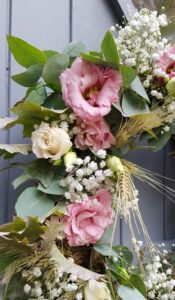
- Gather your supplies. You’ll need some wire or a bendy stick form the base of your crown, as well as floral tape or string to secure the flowers.
- Shape the base of the crown so it fits comfortably just above your ears.
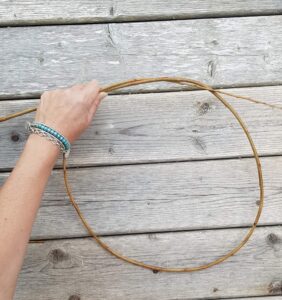
- Cut your flowers and greenery to a manageable size. You’ll want them to be long enough to attach to the wire base, but not so long that they’re drooping over your face.
- Start by attaching the largest flowers or pieces of greenery to the base of your crown, tying them on just underneath the blooms. Continue by winding the string around the wreath, adding more flowers in as you go.
- Once your crown is complete, tie the ends of the wire or twine together to secure it. You can also add a ribbon or other embellishment to finish it off.
What does everyone eat at Midsommar?
Midsummer is a time to indulge in delicious traditional foods. Tables overflow with pickled herring, a Scandinavian staple; different varieties offer a range of flavors, from creamy and mustardy to spicy and tart. We love ours with rye bread, made into open sandwiches, along with smoked salmon (gravad lax), cured with dill, sugar, and salt, followed by my grandmother Inge’s Danish meatball recipe (frikadeller), along with potato salad and Danish pickled cucumbers (agurkesalat)…don’t forget the schnapps!
Midsummer pudding!
No Scandinavian feast is complete without a pudding! We love my grandmother’s Danish rødgrød med fløde, a traditional dessert recipe made with rhubarb or fresh berries… yes, it’s a cold soup, but is absolutely delicious sprinkled with sugar and a dollop of cream!

